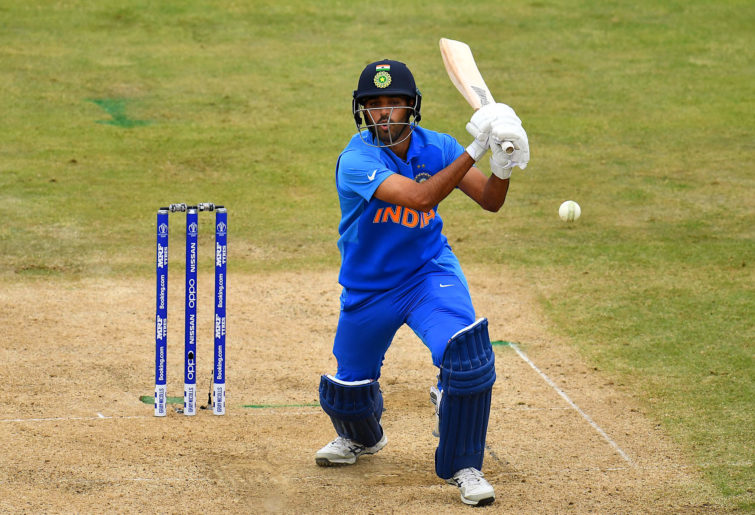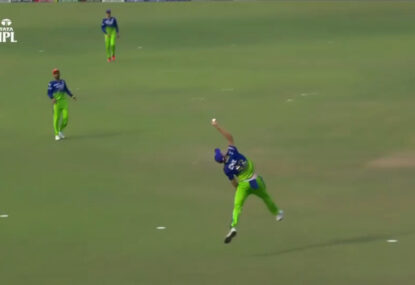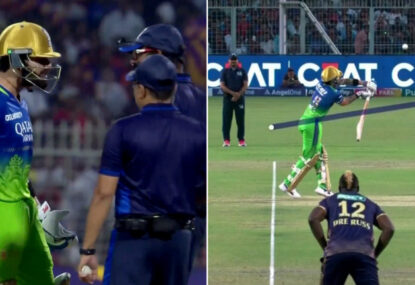Putting the disappointments of the recently concluded T20 World Cup behind them, team India seems to be on a roll in the ongoing T20 series against Kiwis at home.
Under the new regime of T20 captain Rohit Sharma and the head coach Rahul Dravid, India certainly seem to have found their rhythm and appear to be a settled unit.
After an edgy win in the opening T20 in Jaipur, team India cruised to a dominant seven-wicket victory over New Zealand in Ranchi on Friday (November 19). With second win in as many matches, India have gained an unassailable 2-0 lead in the three-match T20 series against the Blackcaps.
In the second T20I, team India were forced to make one change in their line-up owing to an injury to their pacer Mohammad Siraj. Harshal Patel, making his international debut replaced Siraj in the line-up.
Batting first, Kiwi openers Martin Guptill and Daryl Mitchell raced to an impressive start. However, team India never appeared to be under any pressure throughout the contest, especially after the fall of Guptill’s wicket in the powerplay.
The bowlers, displaying discipline and control, set up the victory for team India, and the effort of the batters was liking icing on the cake, propelling their side to an admirable win.
On that note, let’s take a closer look at three keys to India’s comprehensive 7-wicket win over the Kiwis in Ranchi.
#1: Harshal Patel’s dream debut
Harshal Patel was the purple cap holder at this year’s IPL, claiming 32 wickets in his 15 matches for Royal Challengers Bangalore. His stupendous efforts in the IPL were rewarded with a call-up to the Indian team and he did not fail to impress in his debut appearance for the men in blue.
The 30-year-old right-arm quick had a dream debut against the Kiwis, proving that he can perform at the international level as well. Patel returned with impressive figures of 2/25 off his four overs and rightly earned the player of the match award.
Patel was introduced into the attack at the end of the powerplay. After a decent first over, Patel was entrusted to bowl the 12th over of New Zealand innings. And he didn’t disappoint his captain, picking his first scalp at the international level.
Bowling into the surface and by taking the pace off the bowl, he deceived the dangerous-looking Daryl Mitchell to provide his team an important breakthrough.
He was put under pressure in his third over, 17th of the innings by Glen Phillips who hit a six off the first ball of the over. But showing calmness and composure, Patel pulled it back beautifully and had the last laugh, dismissing Phillips to put further brakes on the New Zealand innings.
The feature of Patel’s bowling was his ability to consistently bowl into the surface, taking the pace off the ball, thereby strangle holding the Kiwi batsmen. His variations with the ball kept the batsmen guessing.
With the next T20 World Cup Down Under just a year away, Harshal Patel can be an excellent addition to the mix of Indian pacers ahead of the showpiece event.

Bhuvneshwar Kumar bats for India. (Photo by Clive Mason/Getty Images)
#2: New Zealand’s batting line-up suffocated in the middle overs
New Zealand raced off to a quickfire start, amassing 48 runs off 4.1 overs, courtesy of Guptill’s onslaught. However, his wicket in the fifth over was the biggest turning point of New Zealand’s batting.
While Mitchell and Mark Chapman tried to maintain the scoring rate for a couple of overs after Guptill’s dismissal, Indian bowlers were outstanding in the middle overs. The spinners Ravichandran Ashwin and Axar Patel played their role to perfection, choking the New Zealand batters despite the ball being wet.
While New Zealand batsmen tried hard to get out of the stranglehold, the credit must go to the Indian bowlers for the discipline, control, and variety they showcased in the middle overs.
The feature of India’s bowling in the middle overs was their ability to chip in with wickets at regular intervals, thereby not allowing any batsman to settle. The tactics to bowl into the pitch, taking the pace off the ball worked wonders for the home side.
With New Zealand’s batting suffocating in the middle overs, they needed a strong finish at the death to propel themselves to a respectable total. But neither James Neesham nor Mitchell Santner were able to provide the late flourish that their side would have desperately hoped for.
Indian bowling unit managed to restrict the Blackcaps for 153/6 off their 20 overs, thereby perfectly setting up the platform for their batters to finish the job.
#3: India’s clinical effort with the bat
Poor batting had predominantly let team India down against Pakistan and New Zealand in the recently concluded T20 World Cup.
However, that was not the case in Ranchi as India’s openers Sharma and KL Rahul clinically diffused New Zealand’s challenge to help their team win by 7 wickets and 16 balls to spare.
India’s openers were watchful, to begin with, mixing caution with aggression. With inexperience in the middle order, the onus was on Sharma and Rahul to deliver with the bat. They did that emphatically, stitching together a match-winning 117-run opening stand off just 13.2 overs.
While they endured a quiet period of three overs after the powerplay, Sharma and Rahul targeted Santner and Adam Milne to release the pressure.
While India’s openers put on a scintillating display of majestic stroke play, they were also helped by New Zealand’s poor bowling effort. On a track that demanded pace off the ball, the Kiwi bowlers offered pace to India’s openers and paid a heavy price.
Except for their captain Tim Southee, who returned with brilliant figures of 3/16 off his four overs, all the other New Zealand bowlers collectively failed to make any impact.
If bowlers had set up the contest for team India, their openers emphatically sealed the victory, helping their side win the series with one game still to spare.
The third and final T20 of the series will be played at the iconic Eden Gardens in Kolkata on Sunday (November 21). With series already in the bag, the Indian team management resting should aim to Test some of their bench strength in the dead rubber in the final T20 of the series.




































































































